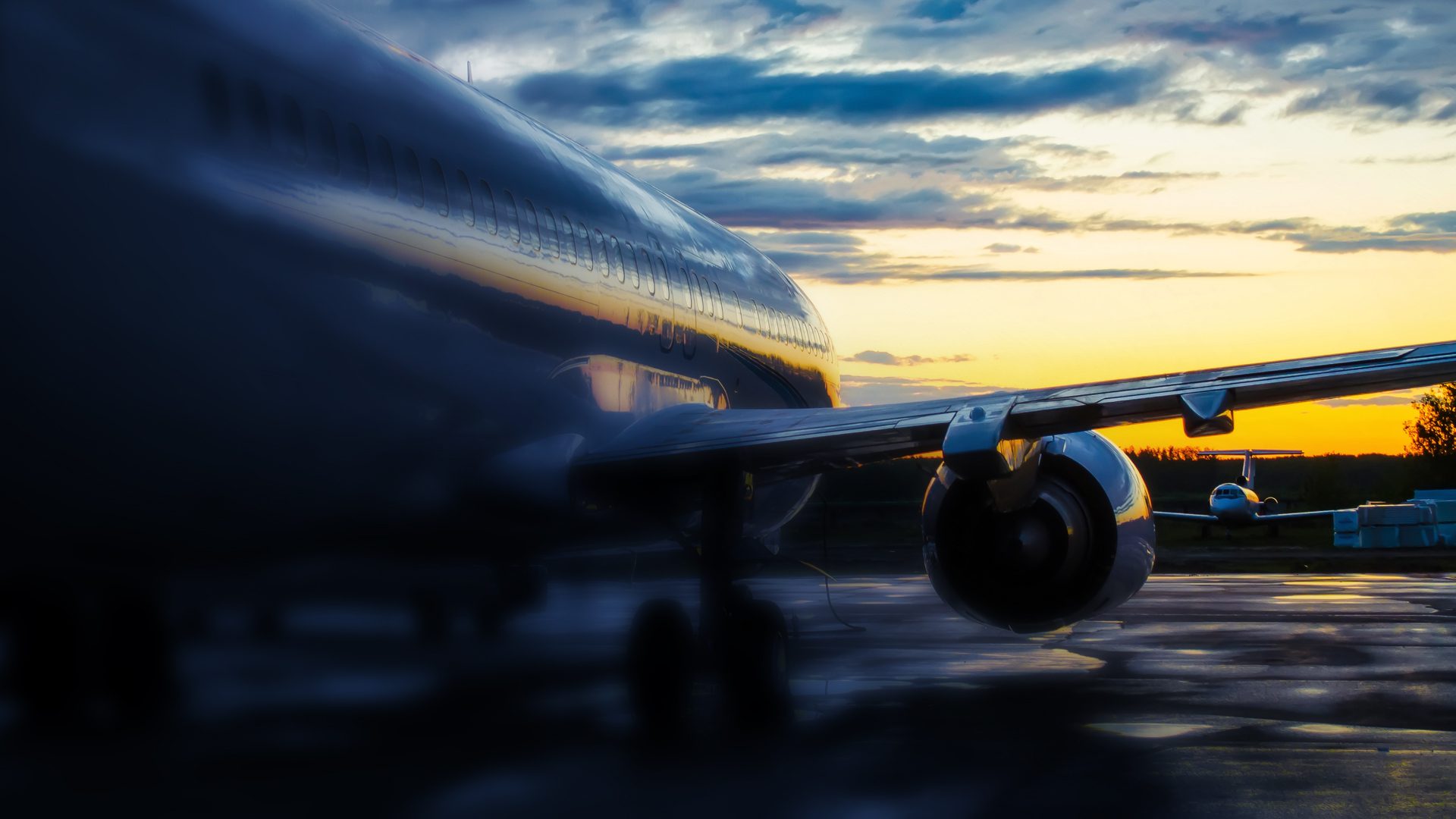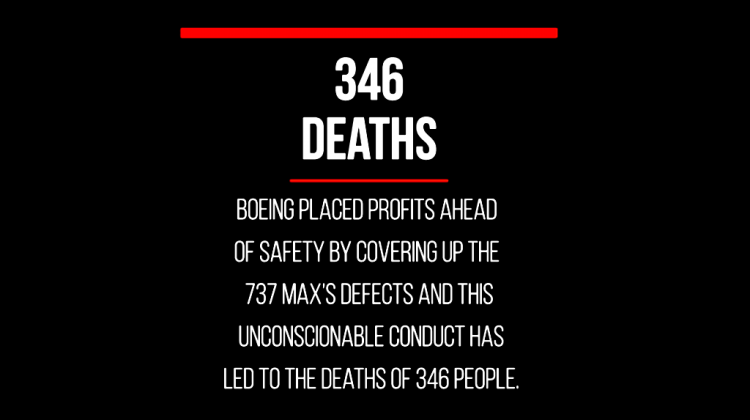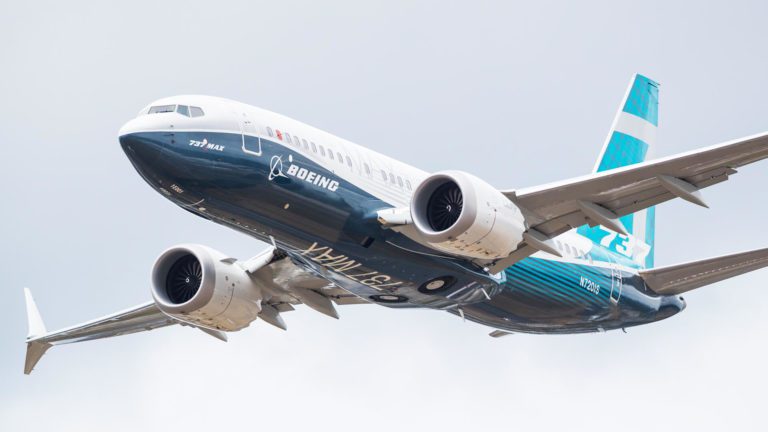
Two Plane Crashes in Five Months
Two separate Boeing 737 Max 8 crashes, one involving Lion Air and the other Ethiopian Airlines, killed 346 people in a span of less than five months. The Lion Air crash occurred in October 2018 and the Ethiopian Airlines crash occurred in March 2019. The two aircraft were new, and preliminary investigations into the deadly crashes show alarming similarities. They both point to the malfunctioning Maneuvering Characteristics Augmentation System (MCAS) or the automated flight control system. Boeing also claims the problem rests in the MCAS. The company began developing a “fix” for the MCAS software following the Lion Air crash, yet it was not ready to be installed prior to the Ethiopian Airlines crash.
The Federal Aviation Administration (FAA) told Boeing the fix was to be implemented by the end of March 2019; however, the final implementation is expected to take much longer and could require a more extensive overhaul of the 737 MAX design.
The 737 MAX has been grounded worldwide since shortly after the Ethiopian Airlines crash and will remain grounded for the foreseeable future.
Retrofitting the 737
The original 737 design was released in 1967 and has been a money-making aircraft for Boeing for many years. However, facing competition from newer and more efficient designs from aircraft-maker Airbus, and in an effort to salvage dwindling orders for its aircraft, Boeing scrambled to retrofit the old 737 design and rename it the 737 MAX.
The original aircraft was built low to the ground to allow baggage handlers easy access to the plane’s underbelly luggage compartments and to allow passengers to board using older stairways. Retrofitting the 737 design to compete with Airbus required Boeing to install larger and more efficient engines. The new engines required more ground clearance than allowed by the older 737 design so Boeing moved the new 737 MAX engines farther forward on the aircraft. As a result, the wings were also moved slightly farther forward. Moving the wings and engines forward also changed the aircraft’s flight characteristics and caused the nose of the plane to have a tendency to pitch up while in flight.
Continued, uncontrolled upward pitch will cause an aircraft to lose forward airspeed and eventually stall and crash. Rather than redesign the airframe or correct the pitch problem through proper engineering, Boeing decided to simply patch the deadly flaws with a new automatic flight-control MCAS system.
What is the MCAS and how is it defective?
The MCAS is a new flight control system that Boeing surreptitiously incorporated into the retrofitted 737. It was designed to be hidden and separate from the autopilot system. Its purpose was to automatically adjust the horizontal tail stabilizer and cause the nose to push downward whenever the system sensed the plane was continuing to climb. Although the MCAS should have only operated when it sensed an imminent stall, the system is flawed and, in fact, attempts to push the 737 nose downward when it should not. When pilots react to the sudden downward motion of the aircraft and pull up on the flight controls, the MCAS again falsely senses a nose-up problem and pushes the nose down again. The result of the tug-of-war between the pilot and the flawed MCAS is an undulating porpoise-like flight path that causes the plane to lose altitude and airspeed until it crashes.
Following the Lion Air crash, Boeing issued warnings as part of the Operations Manual Bulletin and the FAA followed with Airworthiness Directive 2018-23-51. The warnings were issued to all owners, operators and air carriers using the 737 MAX about the potential for erroneous readings from flight-control software on the aircraft. It was through this warning many pilots claim they first learned of the system and have said that Boeing not only failed to disclose the MCAS’s existence, the company also failed to adequately train pilots on the system. The warnings were not enough to prevent a second deadly tragedy.

Ethiopian Airlines crash reveals more problems
Following the Ethiopian Airlines crash, the 737 MAX problems continued unfolding. The investigation into the two back-to-back crashes revealed that the aircraft was not equipped with two safety features that may have helped the pilots maintain control of the aircraft. Although Boeing knew the 737 retrofit design suffered from the pitch-up problem that could cause the plane to stall, it chose to make vital safety equipment optional including an Angle of Attack (AOA) indicator light and a “disagree light.”
The AOA indicator light displays readings of the two AOA sensors and alerts pilots if the aircraft’s angle is too steep at lower speeds, which can result in loss of lift, stalling and crashing. The “disagree light” was the other optional safety feature that, when activated, alerts pilots that readings from the AOA sensors are inconsistent and may not be accurate.
In a classic “too little too late” attempt to clean up its mess, Boeing says it will now offer the disagree light as standard equipment on all new 737 MAX planes – assuming anyone really wants to buy a new 737 MAX. Industry experts explained that the features “cost almost nothing for the airlines to install” but Boeing, like other aircraft manufacturers, can charge extra for them and decided to take advantage of the opportunity to further pad its bottom line.

Ethiopian Airlines Crash Probe
Criminal probe and other investigations
Scrutiny of the MCAS has also raised questions about the process used by the FAA in approving the system. Global regulators, aviation experts, law and policymakers, and other leaders worldwide have questioned whether industry insiders, such as Boeing, had too much influence over the process that ultimately placed the defectively designed planes in the air and loaded them with unsuspecting air travelers.
Immediately following the Lion Air crash, the Department of Justice’s (DOJ) Criminal Division launched an investigation. As part of the investigation, law enforcement authorities began collecting information about the development of the 737 MAX, including the certification process and how the company marketed the aircraft.
Similarly, days after the Ethiopian Airlines crash, U.S. Department of Transportation Secretary Elaine Chao called on the Department’s Office of Inspector General (OIG) to also investigate the 737 MAX certification.
Additionally, U.S. Senator Roger Wicker (R-MS), as head of the Senate Commerce, Science and Transportation Committee, informed FAA acting director Dan Elwell that the committee was opening an investigation regarding whistleblower allegations that the FAA did not handle the certification of the 737 MAX 8 properly.
Reports show that Boeing was aware of the problems with its 737 redesign and the flawed MCAS, but during the certification process it submitted false data and information about the new system in “self-certifying” reports to the FAA. Evidence that Boeing made false statements about the aircraft, withheld information about its systems, or lied to authorities should result in Boeing being charged with fraud and potentially criminal conduct.

Contact an Aviation Accident Attorney
Mike Andrews, a lawyer in the firm’s Personal Injury and Products Liability section, focuses much of his practice on aviation accident litigation. He has represented people seriously injured in aviation crashes, and the family of those killed in both civilian and military airplane crashes and helicopter crashes. Currently, Mike represents family members of victims in the Ethiopian crash.
He also has written a book on the subject to assist other aviation lawyers, “Aviation Litigation & Accident Investigation.” The book offers an overview to the practitioner about the complexities of aviation crash investigation and litigation. Specifically, it looks at aviation industry regulations and complex defenses and provides basic instruction on preserving evidence, insight into legal issues associated with aviation claims, and anecdotal instances of military and civilian crashes.
Mike was recently named by the National Trial Lawyers to the Top 10 Aviation Attorneys list for Alabama. Membership is by invitation only and is extended to most qualified attorneys for each state or region.
If your loved one was a victim killed in the Lion Air or Ethiopian Airlines crashes involving the Boeing Max 8 aircraft, contact Mike Andrews.
Boeing 737 Crash Documents
Sources:
Wall Street Journal
New York Times
Seattle Times
Bloomberg
CNBC
Related News
Beasley Allen Announces Boeing Agreement in Ethiopian Airlines Crash Litigation
Beasley Allen’s Mike Andrews represents the family of Juliah Mwashi, a victim of the Boeing…
$6.6 million fine for Boeing over safety, compliance failures
Two years ago, Mike Andrews, a lawyer in Beasley Allen’s Personal Injury and Product Liability…
Beasley Allen lawyers working on cases cited as ‘ones to watch’
Leading legal publication Law360 is closely watching several cases whose outcomes it believes could impact future…



